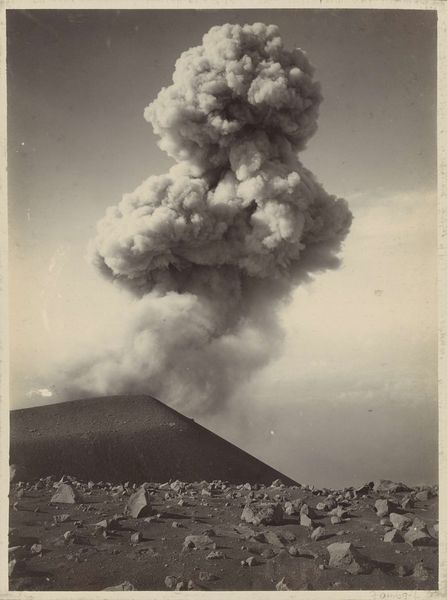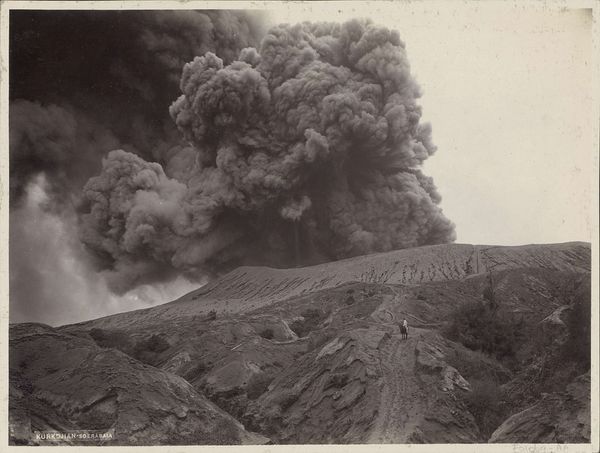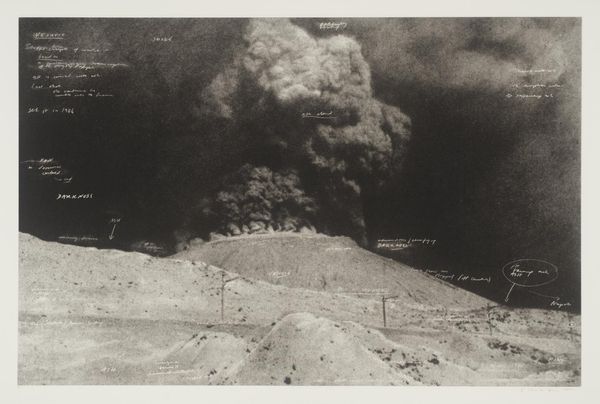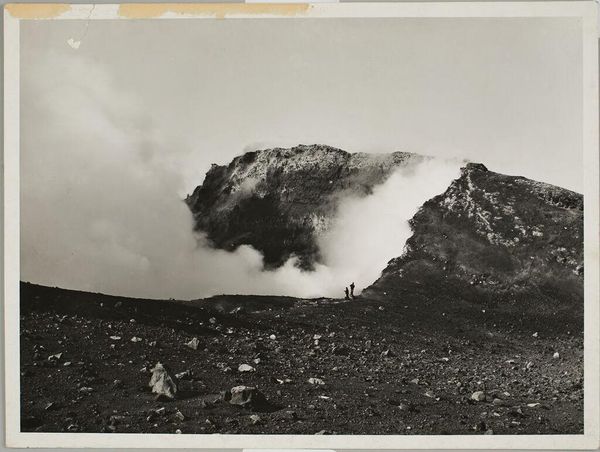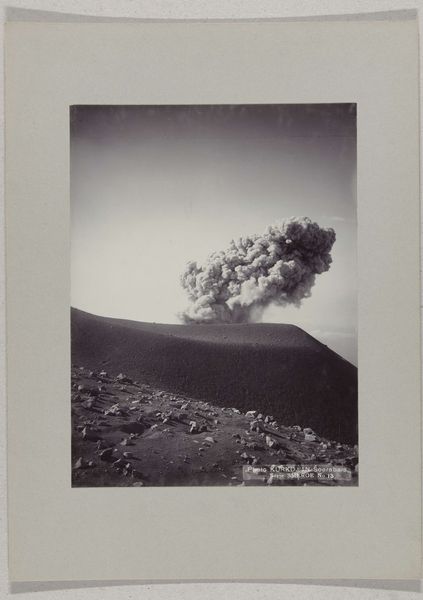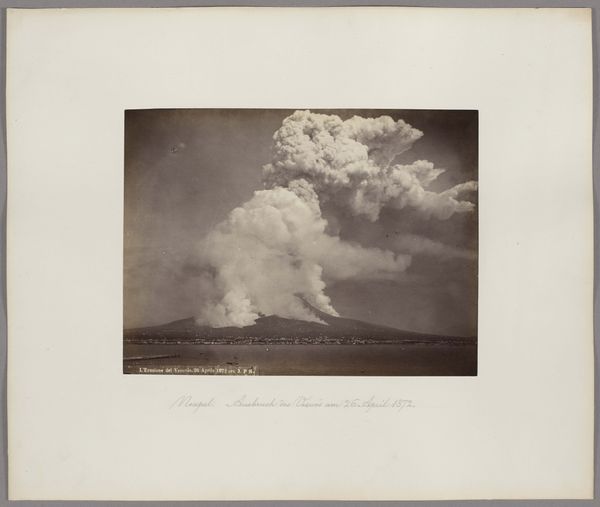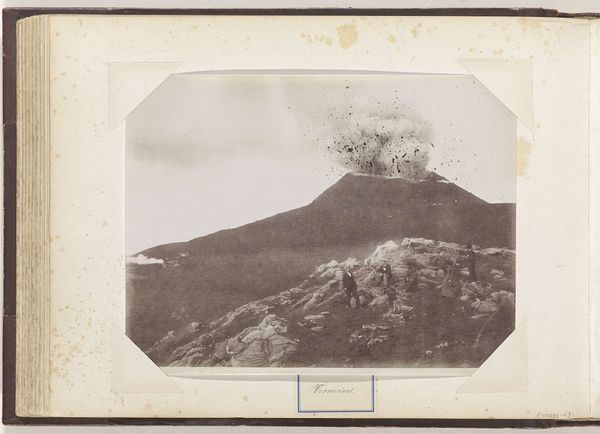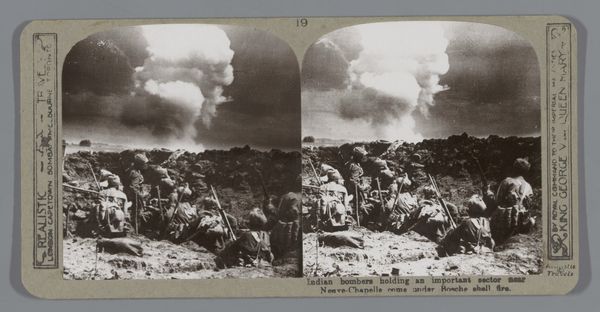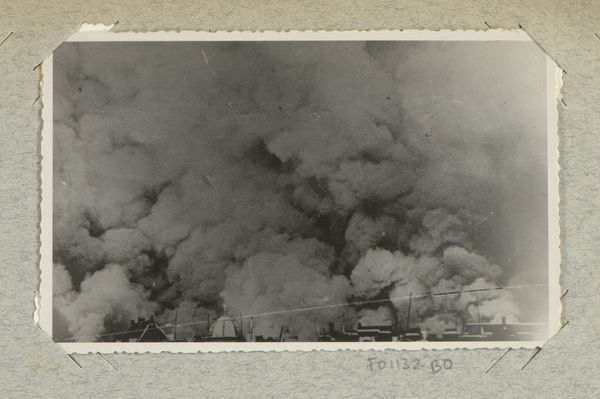
Dimensions: height 176 mm, width 240 mm
Copyright: Rijks Museum: Open Domain
Curator: This evocative gelatin silver print is titled "Man with a Horse before a Smoking Volcano in the Dutch East Indies," created around 1912 by Onnes Kurkdjian. Editor: My first impression is how dramatically the photographer captured the sublime power of nature. The towering plume of smoke dwarves everything else, making the man and horse seem incredibly vulnerable. Curator: Absolutely. The printmaking process here is key. This image is meticulously created as gelatin silver print. Look closely at the tonality and how it enhances the detail in the smoke. Each print required careful work, chemical precision and offered specific expressive potential, which shaped how audiences of that time and now experience it. Editor: And context is crucial. Kurkdjian worked in the Dutch East Indies. What did it mean to capture this scene from a colonial perspective? The image presents an encounter with the raw power of the Indonesian landscape, filtered through the lens of European control and documentation. Is this a celebration of nature’s spectacle or an implicit claim of mastery over a foreign land? Curator: It’s important to remember that prints like this had significant value for colonial administrative. The colonial presence was expressed by technological and material domination; such an image, in itself, reinforced the assumed order of governance and naturalized the power dynamic. Editor: That said, you can't ignore the formal echoes of Romanticism. The lone figure before an awe-inspiring, even terrifying, natural event—think of Caspar David Friedrich's wanderer. There's a fascination with nature, but one that's undeniably tied to power structures of the era. Curator: I agree that its artistic strategies connect to pre-existing visual patterns, but the final image is a colonialist material production in photographic form, a tangible claim to visibility and presence on Indonesian terrain. This image became, in the European context, a consumer item itself. Editor: Ultimately, I'm left considering the ongoing implications of this photograph. The image speaks to a moment where cultures, forces, and ideas collided, leaving behind complex narratives about the human place within nature and political geography. Curator: And by recognizing it for the thing that it materially *is*, we can also acknowledge how photography like this becomes woven into the cultural fabric that still determines the fate and meaning of what constitutes “landscape” today.
Comments
No comments
Be the first to comment and join the conversation on the ultimate creative platform.
